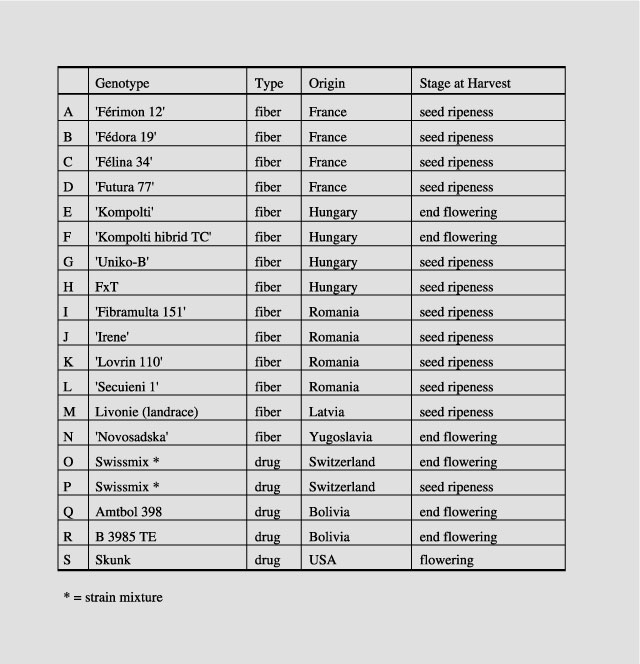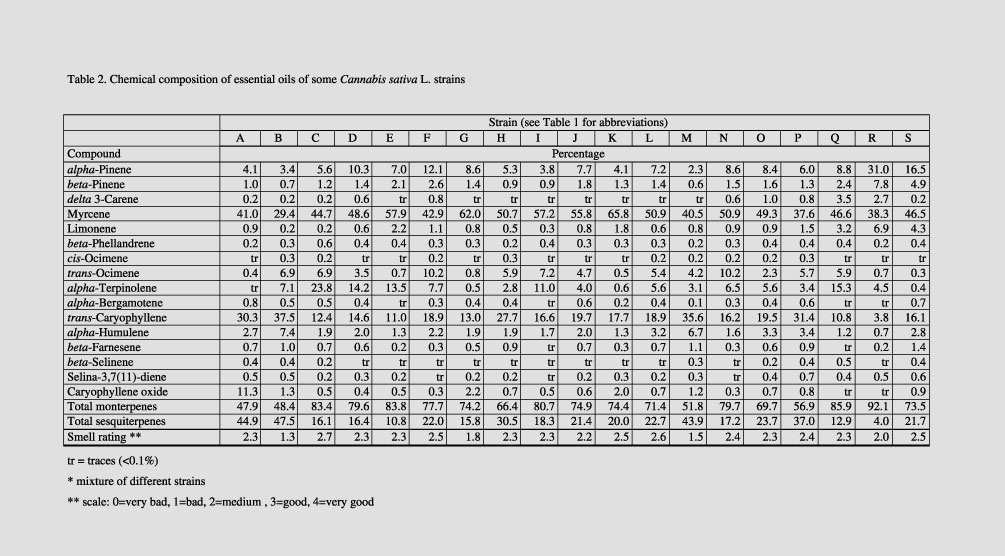MyGreenToe
Member
Hi guys! I thought starting a new thread for this discussion, in the right place, would be a good idea. Here it is!
For reasons which should be obvious, serious scientific analysis of MJ, particularly in relation to strain, and the levels of active compounds, has been limited. Given recent political developments, this analysis is now available to everyone in legal areas, not just govt mandated tests. We can finally start seeing what makes the best strains so good, and determine what is there without having to go through the highly subjective method of just smoking it(nonetheless an important part of any analysis )
)
So how do they do that anyways?
There are two basic methods in use to look at the profile of compounds in mj:
Gas Chromatography with Mass Spectroscopy(GC/MS), and
Thin Layer Chromatography(TLC)
GC/MS provides actual number based data, and is more useful for actual analysis. It is not a cheap test to run. I dont have actual pricing data, anyone that has done testing, feel free to chime in with what you paid!
TLC provides a visual means of seeing what your weed is made up of, and is of limited value from a measuring aspect. It is however very affordable per test, and could be used as a somewhat reliable method of fingerprinting a strain, and could be useful in this aspect for dispensaries to check they are getting what they expect and not a substitution.
OK thats a start. I will add more detailed explanations of each method at a later time.
The results of these analysis can be useful in many ways:
-Developing a rational database to help medical users find the right plant for what ails them.
-Helping breeders narrow selection with great surity than can be had with smoking alone. (for example 2 plants up for breeding are both excellent, to the point of being hard to choose. if analysis shows one is .5% stronger in all categories, mystery solved.)
-helping us growers choose the strains we'd like to grow!
-one thing I always wanted to do with access to Gas Chrom/Mass Spec, is to do several harvests spread out by one week(i.e harvest some at 8 wks, some at 9, some at 10), and have each batch analyzed to help find the best cut day. If you spread the cuts out over the period of trichs changing from mostly cloudy over to amber, the results of analysis could be very interesting. Great way to find the point of peak THC or CBD content for a strain...
Obviously these tests are not within reach of everyone. I didn't start this thread to have any measuring contests or potency battles. I'd just like to discuss the analysis objectively. Please keep that in mind.
Keep it Green
MGT
PS I'm no expert on this stuff, though I am well read on the topic. Feel free to note any necessary corrections, or alternatives I may be unaware of.
For reasons which should be obvious, serious scientific analysis of MJ, particularly in relation to strain, and the levels of active compounds, has been limited. Given recent political developments, this analysis is now available to everyone in legal areas, not just govt mandated tests. We can finally start seeing what makes the best strains so good, and determine what is there without having to go through the highly subjective method of just smoking it(nonetheless an important part of any analysis
So how do they do that anyways?
There are two basic methods in use to look at the profile of compounds in mj:
Gas Chromatography with Mass Spectroscopy(GC/MS), and
Thin Layer Chromatography(TLC)
GC/MS provides actual number based data, and is more useful for actual analysis. It is not a cheap test to run. I dont have actual pricing data, anyone that has done testing, feel free to chime in with what you paid!
TLC provides a visual means of seeing what your weed is made up of, and is of limited value from a measuring aspect. It is however very affordable per test, and could be used as a somewhat reliable method of fingerprinting a strain, and could be useful in this aspect for dispensaries to check they are getting what they expect and not a substitution.
OK thats a start. I will add more detailed explanations of each method at a later time.
The results of these analysis can be useful in many ways:
-Developing a rational database to help medical users find the right plant for what ails them.
-Helping breeders narrow selection with great surity than can be had with smoking alone. (for example 2 plants up for breeding are both excellent, to the point of being hard to choose. if analysis shows one is .5% stronger in all categories, mystery solved.)
-helping us growers choose the strains we'd like to grow!
-one thing I always wanted to do with access to Gas Chrom/Mass Spec, is to do several harvests spread out by one week(i.e harvest some at 8 wks, some at 9, some at 10), and have each batch analyzed to help find the best cut day. If you spread the cuts out over the period of trichs changing from mostly cloudy over to amber, the results of analysis could be very interesting. Great way to find the point of peak THC or CBD content for a strain...
Obviously these tests are not within reach of everyone. I didn't start this thread to have any measuring contests or potency battles. I'd just like to discuss the analysis objectively. Please keep that in mind.
Keep it Green
MGT
PS I'm no expert on this stuff, though I am well read on the topic. Feel free to note any necessary corrections, or alternatives I may be unaware of.








